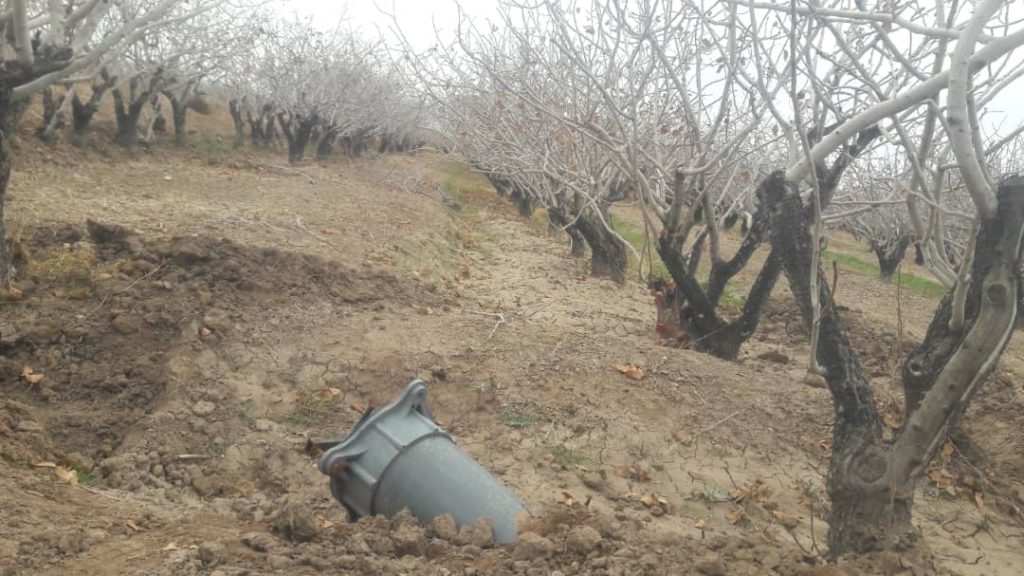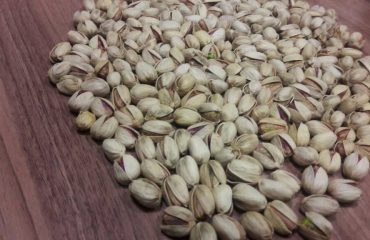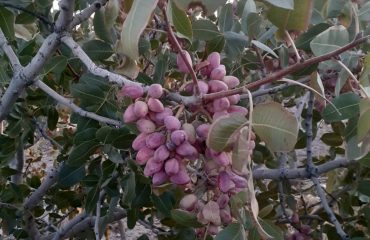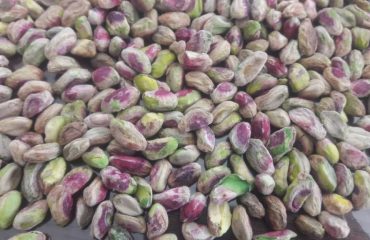Pistachio tree, like other cold fruit trees, is pruned every year in winter when the plant is dormant. Winter pruning causes less weakness and further strengthening of the remaining buds of the tree. Pruning should be done after the fall leaves fall and before the buds swell in late winter.
However, summer pruning is often done on young pistachio trees before fruiting, and on mature trees, it is done only to remove diseased, defective and obstructing branches that are in the path of the garden. In order to limit the size of the tree, it is necessary to carry out pruning and thinning of the branches annually.
Pistachio trees need cooling
Pistachios, like other deciduous trees, require a minimum of 1000 hours of cold at temperatures below 7 ° C during hibernation to develop and complete bud growth. The amount of cold requirement is different in different cultivars of pistachio.
By examining the meteorological statistics during the plant recession period, if the cold requirement of the desired cultivar is not met, in February and March, foliar spraying of trees using mineral oils or other recommended materials that can replace the cooling requirement should be done. Appeared.
According to studies, the best treatments to break the recession and overcome the lack of cooling needs of pistachio trees are as follows:
Soybean oil 6%.
Sodium benzoate treatment 1 per thousand + potassium nitrate 5 per thousand + Volk oil 5%.
Dormax 4%.
Volk 4%.
The above treatments, in addition to eliminating the need for cooling, will cause uniformity of fruit growth, reduce oss, reduce the percentage of porosity, and increase the weight of 100 seeds, the weight of the fresh crop in each tree. Of course, considering that Volk oil is an oil and chemically, it will definitely have many negative side effects in the long run.
However, these effects are now observed in some orchards that have been treated with high concentrations of volk oil in the form of drying of the branches and discoloration of the trunk due to high production of lentils in the trunk. Therefore, it is necessary to find a substance that can have effects such as Volk oil in overcoming the lack of cooling needs and on the other hand have fewer side and negative effects.
According to recent studies, soybean oil with a concentration of 6% and leather 13, a substance made from vegetable fatty acids in the Pistachio Research Institute, has been able to have good effects in overcoming the lack of cold need, and on the other hand, the naturalness of this substance will have fewer negative side effects. It is recommended to use it as an alternative to Volk oil. Investigations of the effect of treatments on morphological traits and physical characteristics of the plant showed that soybean and leathery oil 13 have less negative effects on pistachio trees compared to volk oil.
Production of pistachio seedlings for propagation and planting
The most common method of pistachio propagation is seedling production and grafting after transplanting the seedlings to the main land. In order to produce seedlings, pistachio seeds are planted in pots or treasuries. Produced seedlings are transferred to the main land in the winter of the first or second year.
Pest management of pistachio trees in winter
In this season, the larvae of pistachio-eating beetles overwinter under the bark of weakened branches of pistachio trees. Pruning and removing weakened branches in pistachio orchards will reduce the population of this pest. In addition, trapping with freshly pruned wood and after a month of collecting and burning them and replacing new wood is very effective in reducing the pest population and preventing damage next year.
In pistachio warehouses where the storage temperature rises in this season, there is a possibility of damage to storage pests, especially Indian moths. To control this pest in this cold season of the year, the temperature of the warehouse should be kept as low as possible by ventilation, and if the temperature of the warehouse is regulated by ventilation below 13 ° C, this pest will not be able to grow and damage.
Winter water ice is effective in reducing the population of some pests that overwinter in the soil. Therefore, irrigating pistachio orchards on cold winter days, which causes the water to freeze at night, reduces some pests, including the pistachio-eating moth.
Plowing pistachio orchards in winter reduces the population of a number of pests. To reduce the population of hibernating adult insects, ordinary pistachio psyllids plowed between rows of pistachio trees are recommended. If pistachio-eating bees are damaged in the garden, all pistachios on the trees and on the ground should be collected and destroyed in this season. it is affect.




